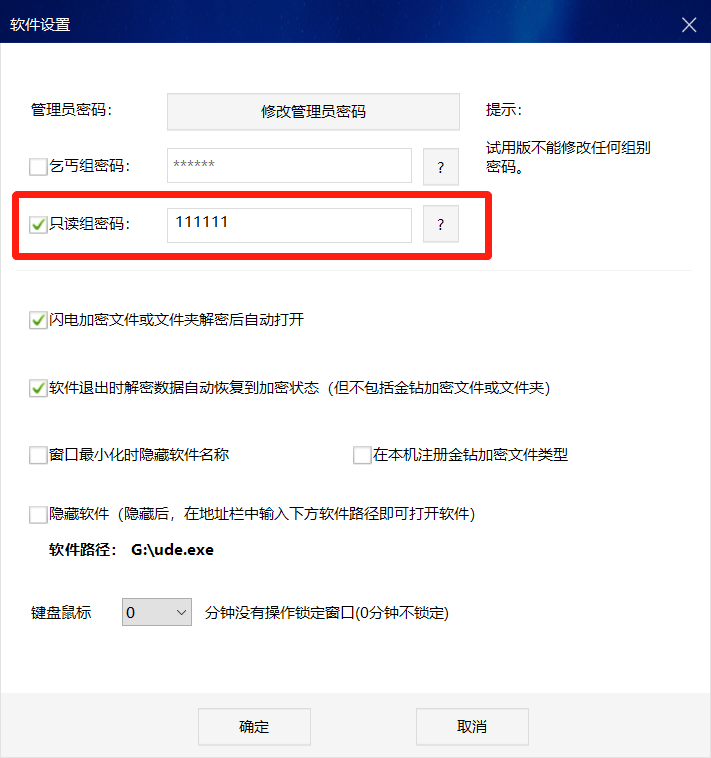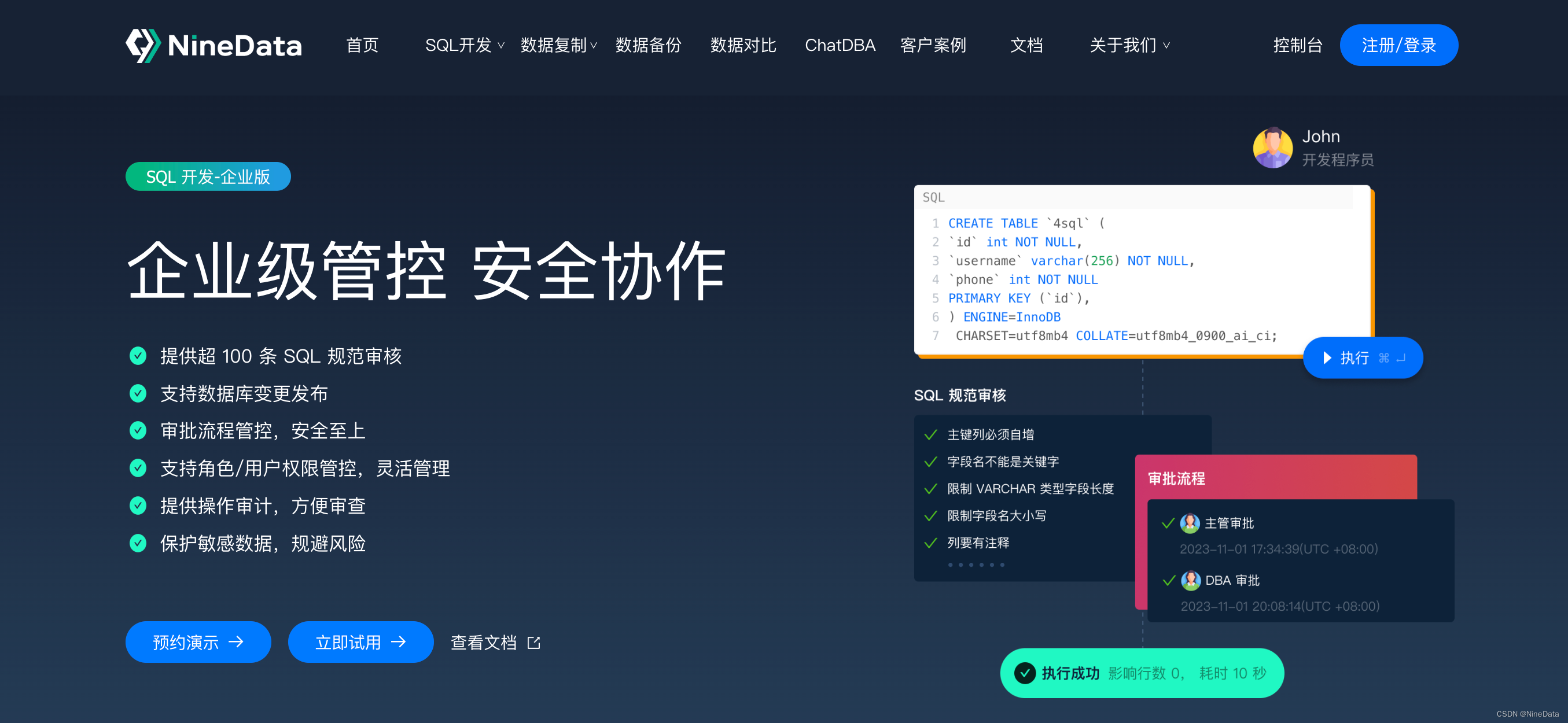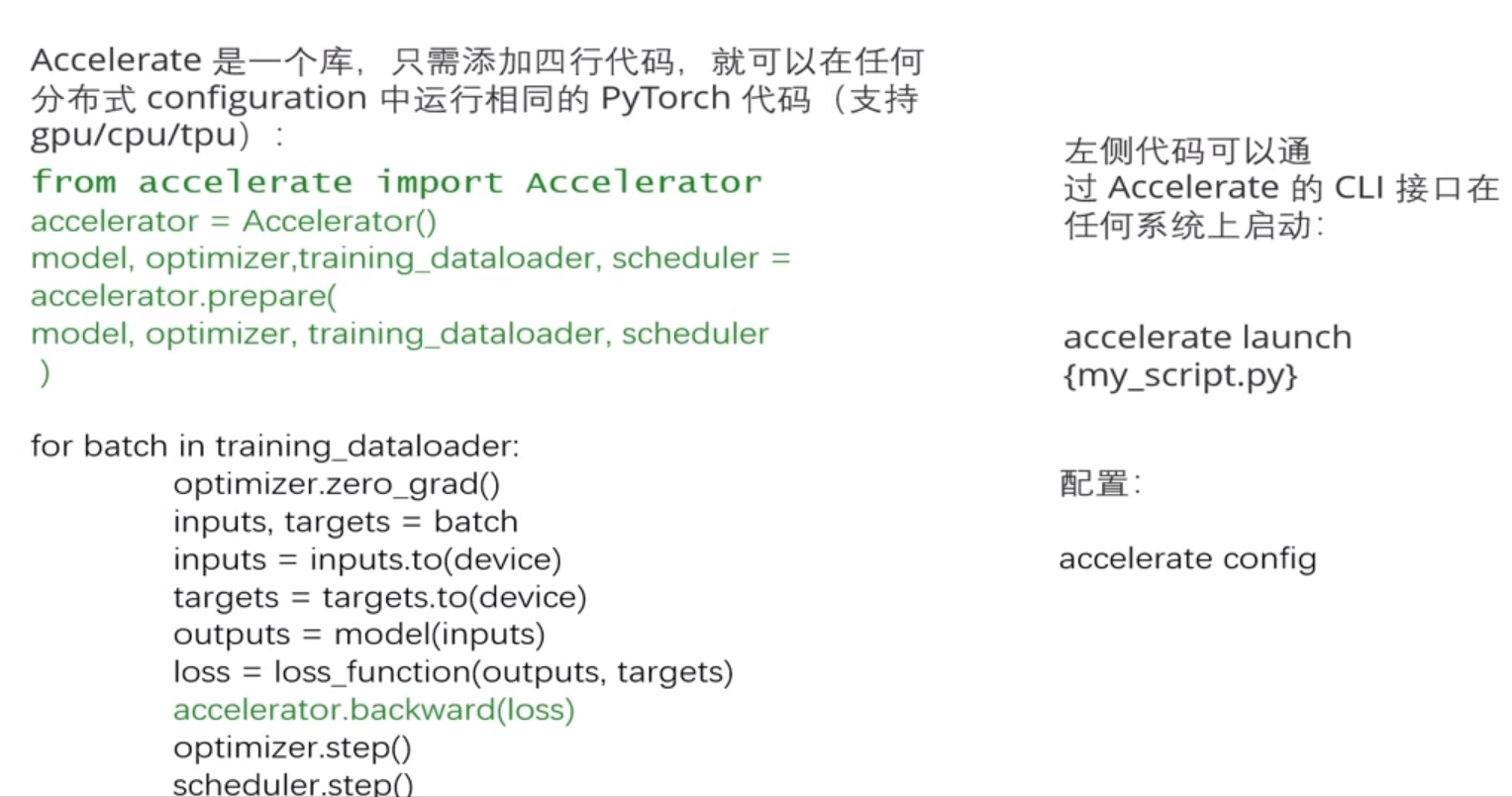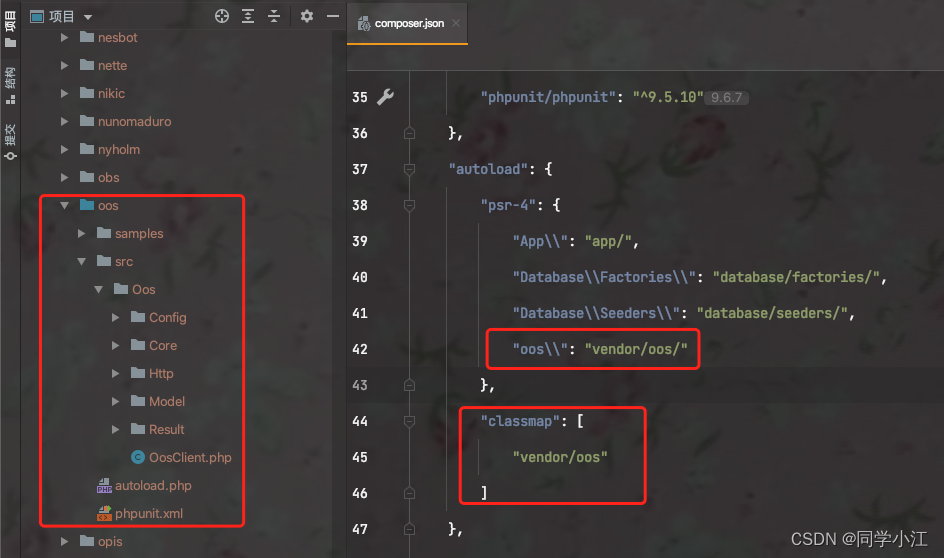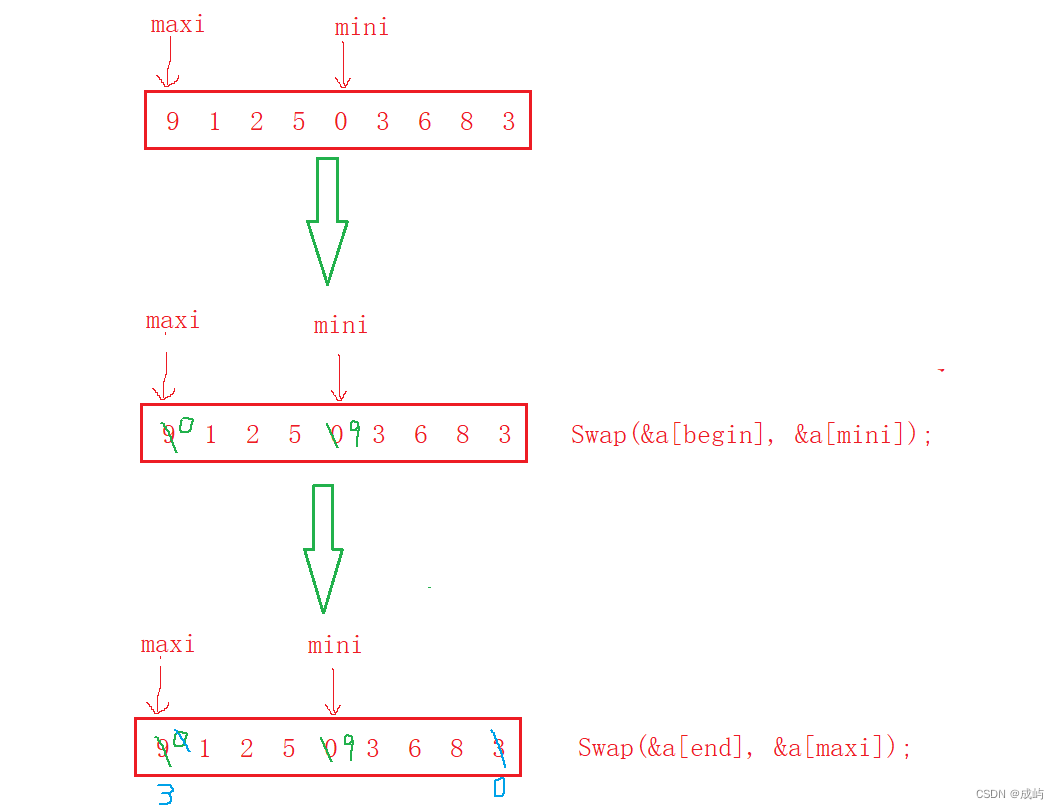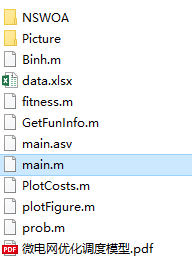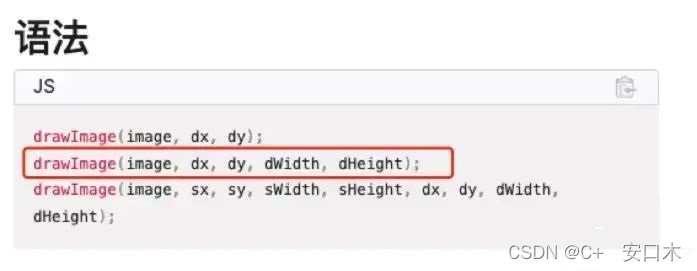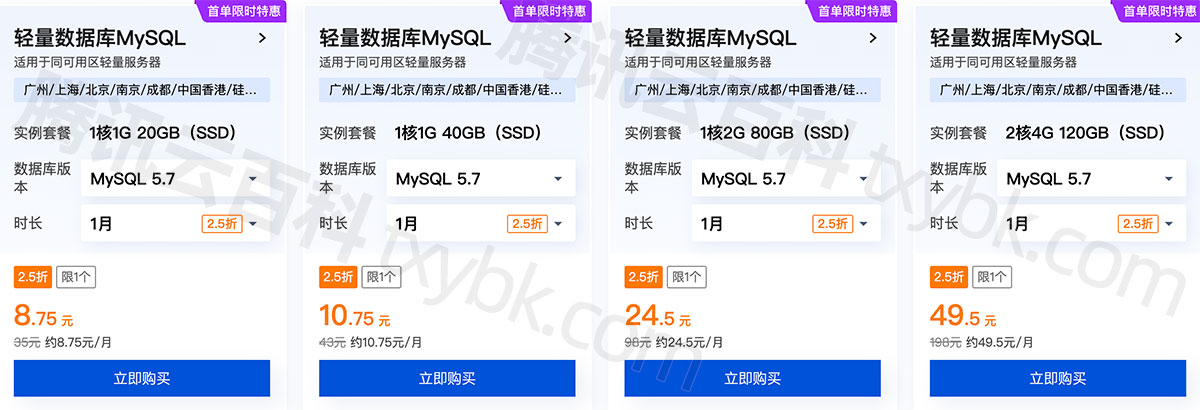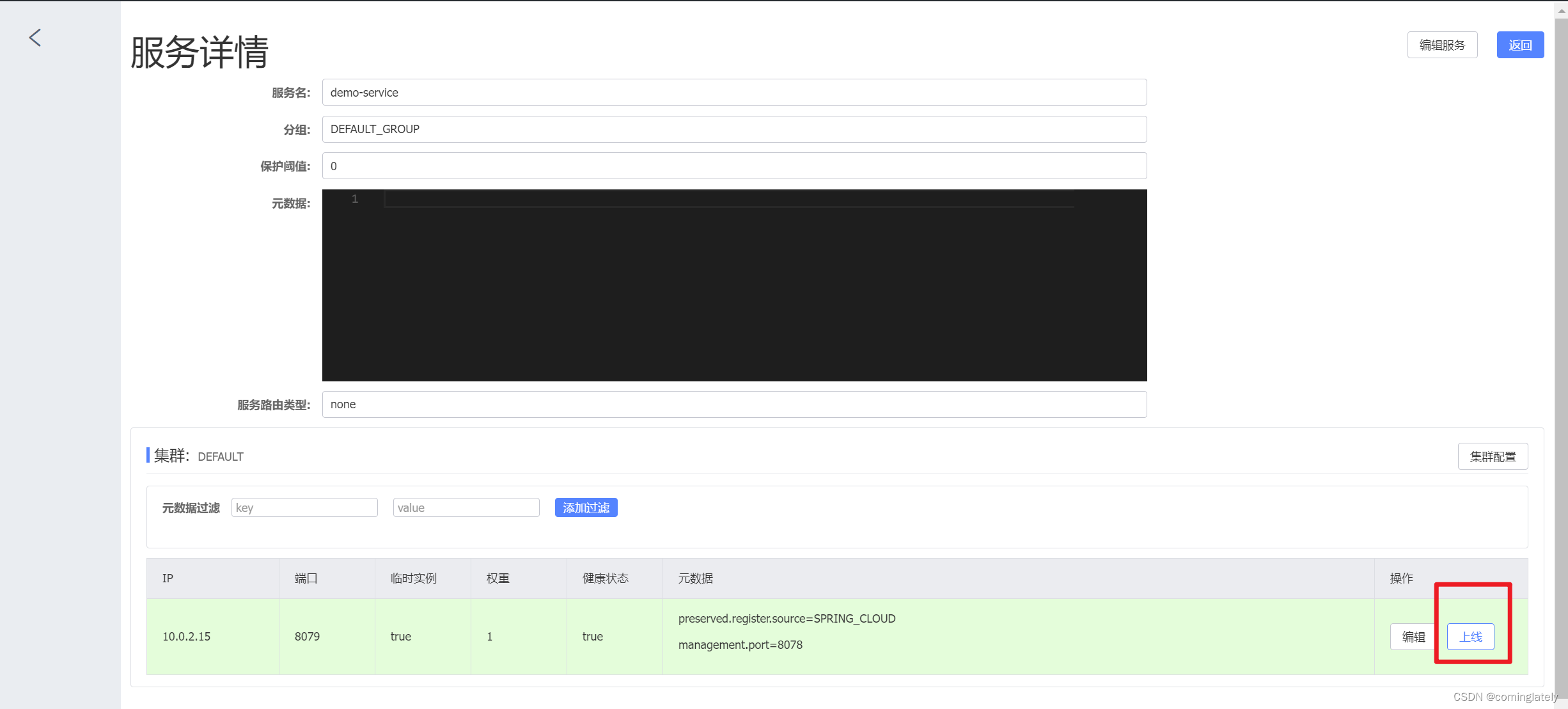
说明:
生产者P 往交换机X(type=direct)会发送两种消息:一、routingKey=XA的消息(消息存活周期10s),被队列QA队列绑定入列;一、routingKey=XB的消息(消息存活周期40s),被队列Q B队列绑定入列。QA、QB两个队列消息在失活(变成死信消息)以routingKey=YD发送到交换机Y(type=direct)。队列QD用routingKey绑定交换机Y消息入列。消费者监听处理QD的消息。
这个设计模型达到了消息从生产者到消费者延迟10s、40s不等的延迟队列处理。
这里用SpringBoot maven:<dependency><groupId>org.springframework.boot</groupId><artifactId>spring-boot-starter-amqp</artifactId></dependency>
在封装工具类中 其中【交换机】【队列】【绑定器】 可直接使用工具类,这里对案例图所用到组件器声明注解出来。
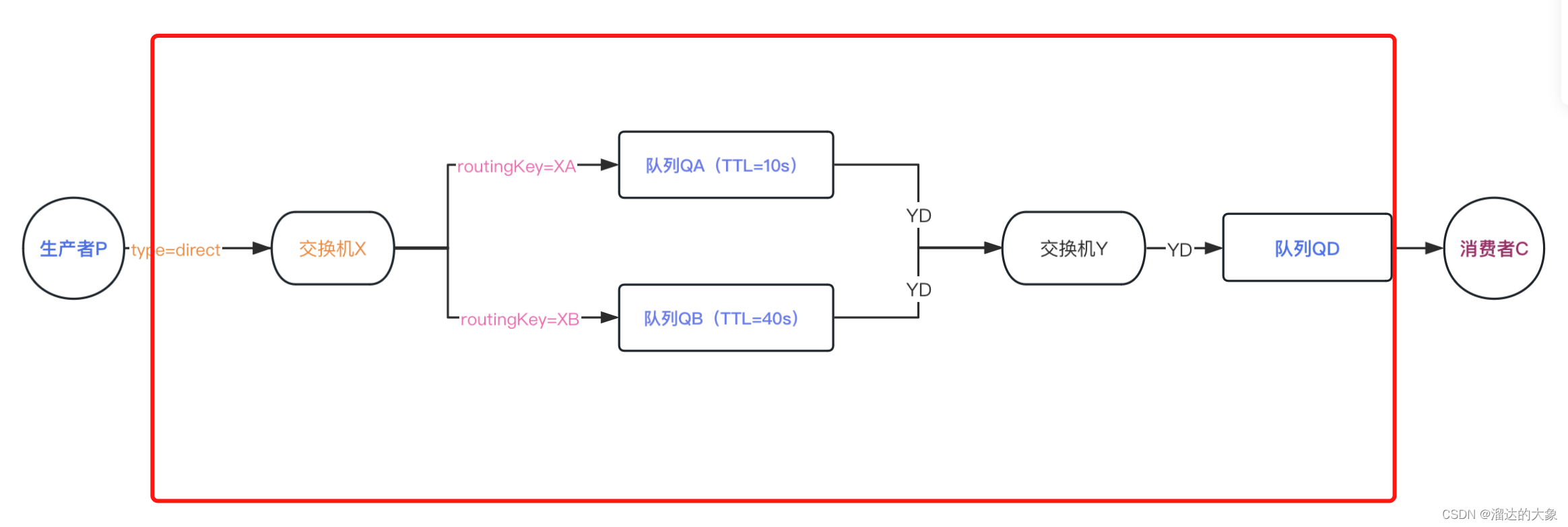
框内的组件和关系 可以在SpringBoot配置类中做出如下的组件声明与关系绑定:
package com.esint.configs;import org.springframework.amqp.core.*;
import org.springframework.beans.factory.annotation.Qualifier;
import org.springframework.context.annotation.Bean;
import org.springframework.context.annotation.Configuration;import java.util.HashMap;
import java.util.Map;/*** TTL延迟队列配置文件类**/
@Configuration
public class TtlQueueConfig {////普通交换机的名称 Xpublic static final String X_EXCHANGE = "X";//死信交换机名称 Ypublic static final String Y_DEAD_LETTER_EXCHANGE = "Y";//普通队列QA QBpublic static final String QUEUE_A = "QA";public static final String QUEUE_B = "QB";//死信队列名称QDpublic static final String DEAD_LETTER_QUEUE = "QD";////声明X_EXCHANGE@Bean("xExchange")public DirectExchange xExchange(){return new DirectExchange(X_EXCHANGE);}//声明死信交换Y_DEAD_LETTER_EXCHANGE@Bean("yExchange")public DirectExchange yExchange(){return new DirectExchange(Y_DEAD_LETTER_EXCHANGE);}//声明队列 QA@Bean("queueA")public Queue queueA(){Map<String, Object> arguments = new HashMap<>(3);//设置死信交换机arguments.put("x-dead-letter-exchange",Y_DEAD_LETTER_EXCHANGE);//设置死信RoutingKey (死信后充当了消费者的发送路由)arguments.put("x-dead-letter-routing-key","YD");//消息过期时间arguments.put("x-message-ttl",10000);return QueueBuilder.durable(QUEUE_A).withArguments(arguments).build();}//声明队列 QB@Bean("queueB")public Queue queueB(){Map<String, Object> arguments = new HashMap<>(3);//设置死信交换机arguments.put("x-dead-letter-exchange",Y_DEAD_LETTER_EXCHANGE);//设置死信RoutingKey (死信后充当了消费者的发送路由)arguments.put("x-dead-letter-routing-key","YD");//消息过期时间arguments.put("x-message-ttl",40000);return QueueBuilder.durable(QUEUE_B).withArguments(arguments).build();}//声明死信队列QD@Bean("queueD")public Queue queueD(){return QueueBuilder.durable(DEAD_LETTER_QUEUE).build();}//捆绑//绑定队列QA与交换机X_EXCHANGE@Beanpublic Binding queueABingXExchange(@Qualifier("queueA") Queue queueA,@Qualifier("xExchange") DirectExchange xExchange){return BindingBuilder.bind(queueA).to(xExchange).with("XA");}//绑定队列QB与交换机X_EXCHANGE@Beanpublic Binding queueBBingXExchange(@Qualifier("queueB") Queue queueB,@Qualifier("xExchange") DirectExchange xExchange){return BindingBuilder.bind(queueB).to(xExchange).with("XB");}//绑定队列QD与交换机Y_Exchange@Beanpublic Binding queueDBingYExchange(@Qualifier("queueD") Queue queueD,@Qualifier("yExchange")DirectExchange yExchange){return BindingBuilder.bind(queueD).to(yExchange).with("YD");}
}生产者与交换机X:这里方便测试 我们把生产者放在一个Controller逻辑里
package com.esint.controller;//发送延迟消息import lombok.extern.slf4j.Slf4j;
import org.springframework.amqp.rabbit.core.RabbitTemplate;
import org.springframework.beans.factory.annotation.Autowired;
import org.springframework.web.bind.annotation.GetMapping;
import org.springframework.web.bind.annotation.PathVariable;
import org.springframework.web.bind.annotation.RequestMapping;
import org.springframework.web.bind.annotation.RestController;import java.util.Date;@Slf4j
@RestController
@RequestMapping("/ttl")
public class SendMesController {@Autowiredprivate RabbitTemplate rabbitTemplate;@GetMapping("/senMsg/{message}")public void sendMes(@PathVariable String message){log.info("当前时间:{},发送一条消息给两个TTL队列:{}",new Date().toString(),message);rabbitTemplate.convertAndSend("X","XA","消息来自ttl为10s的队列:"+message);rabbitTemplate.convertAndSend("X","XB","消息来自ttl为40s的队列:"+message);}
}消费者与死信队列创建一个监听者示例:
package com.esint.consumer;import com.rabbitmq.client.Channel;
import lombok.extern.slf4j.Slf4j;
import org.springframework.amqp.core.Message;
import org.springframework.amqp.rabbit.annotation.RabbitListener;
import org.springframework.stereotype.Component;import java.util.Date;/*** 队列TTL消费者*/@Slf4j
@Component
public class DeadLetterQueueConsumer {//接受消息@RabbitListener(queues = "QD")public void receiveD(Message message, Channel channel) throws Exception{String msg = new String(message.getBody());log.info("当前时间:{},收到私信队列的消息:{}",new Date().toString(),msg);}
}rabbitmq的配置文件:
spring:rabbitmq:host: *.*.*.*port: 5672username: guestpassword: guest接下来可以启动SpringBoot: 启动后,配置方法类会把交换机/队列/绑定器初始化配置
队列:
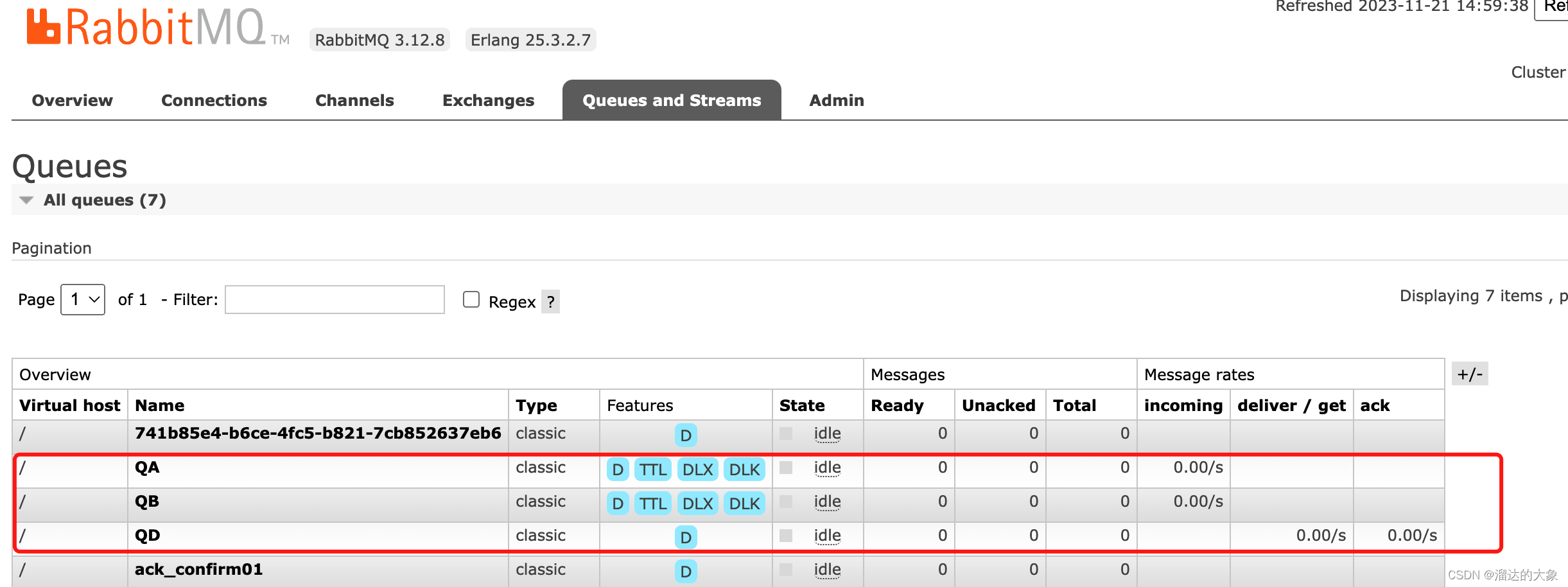
交换机:
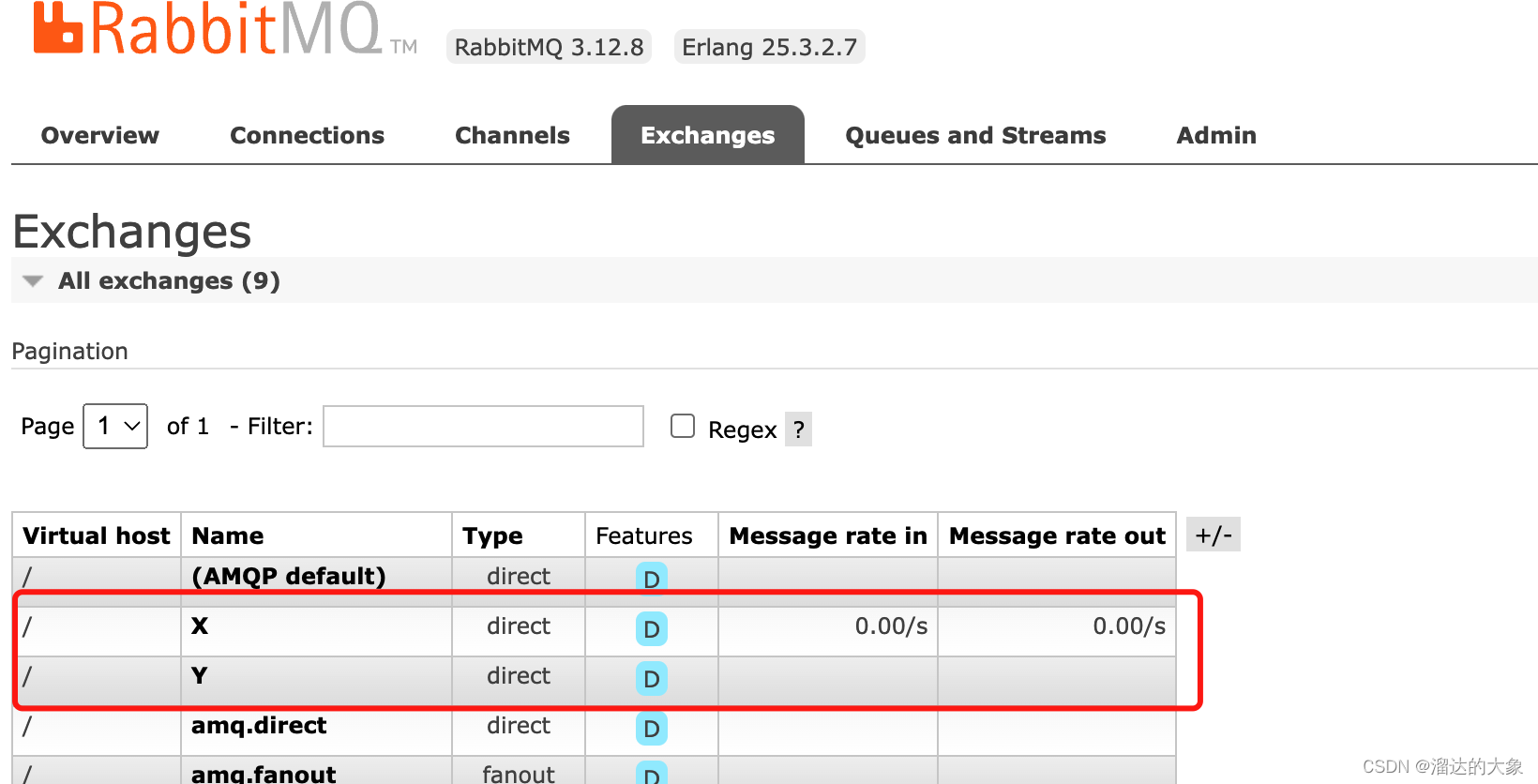
点开详细后,也能考到他们之间的绑定关系:
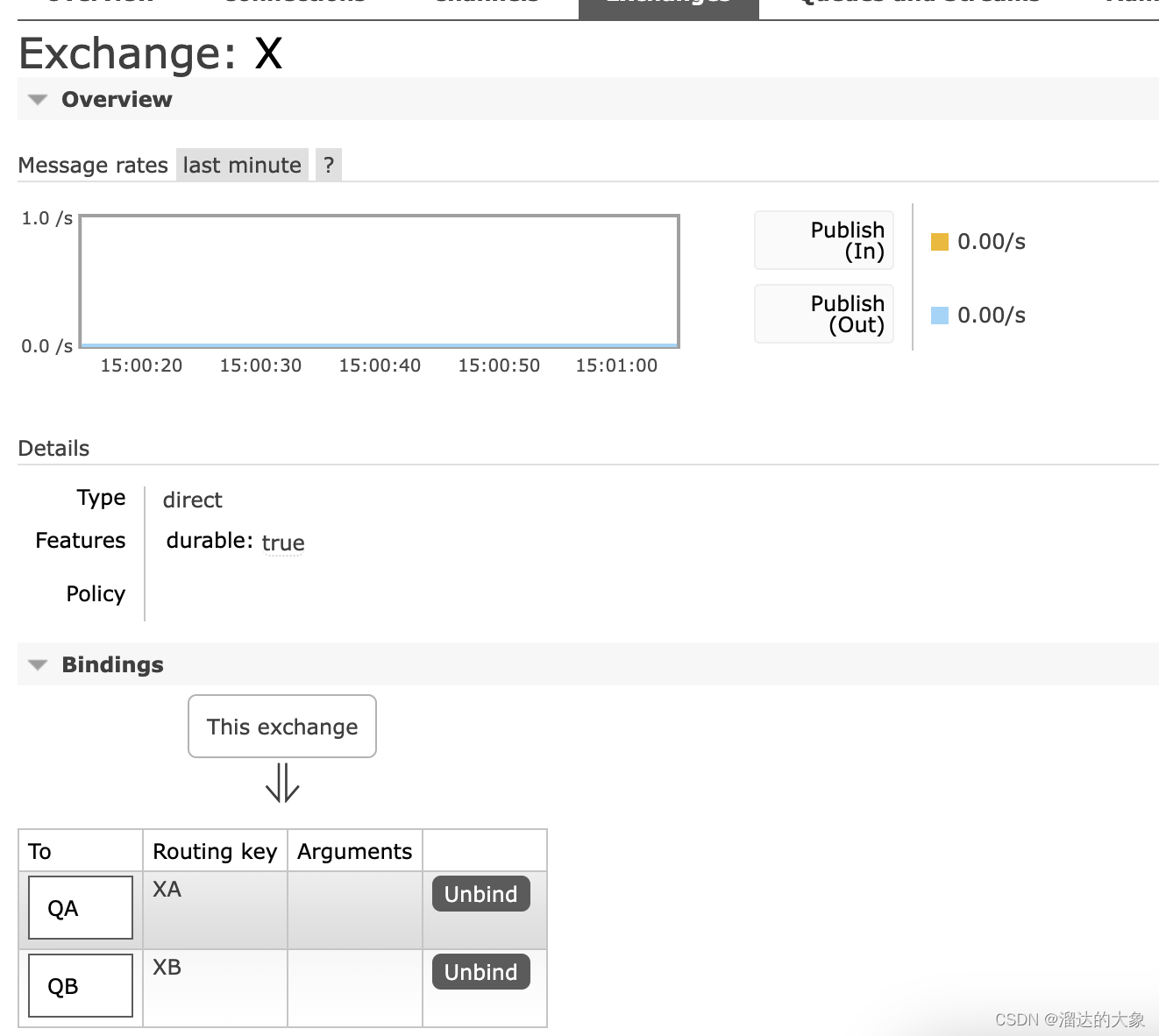
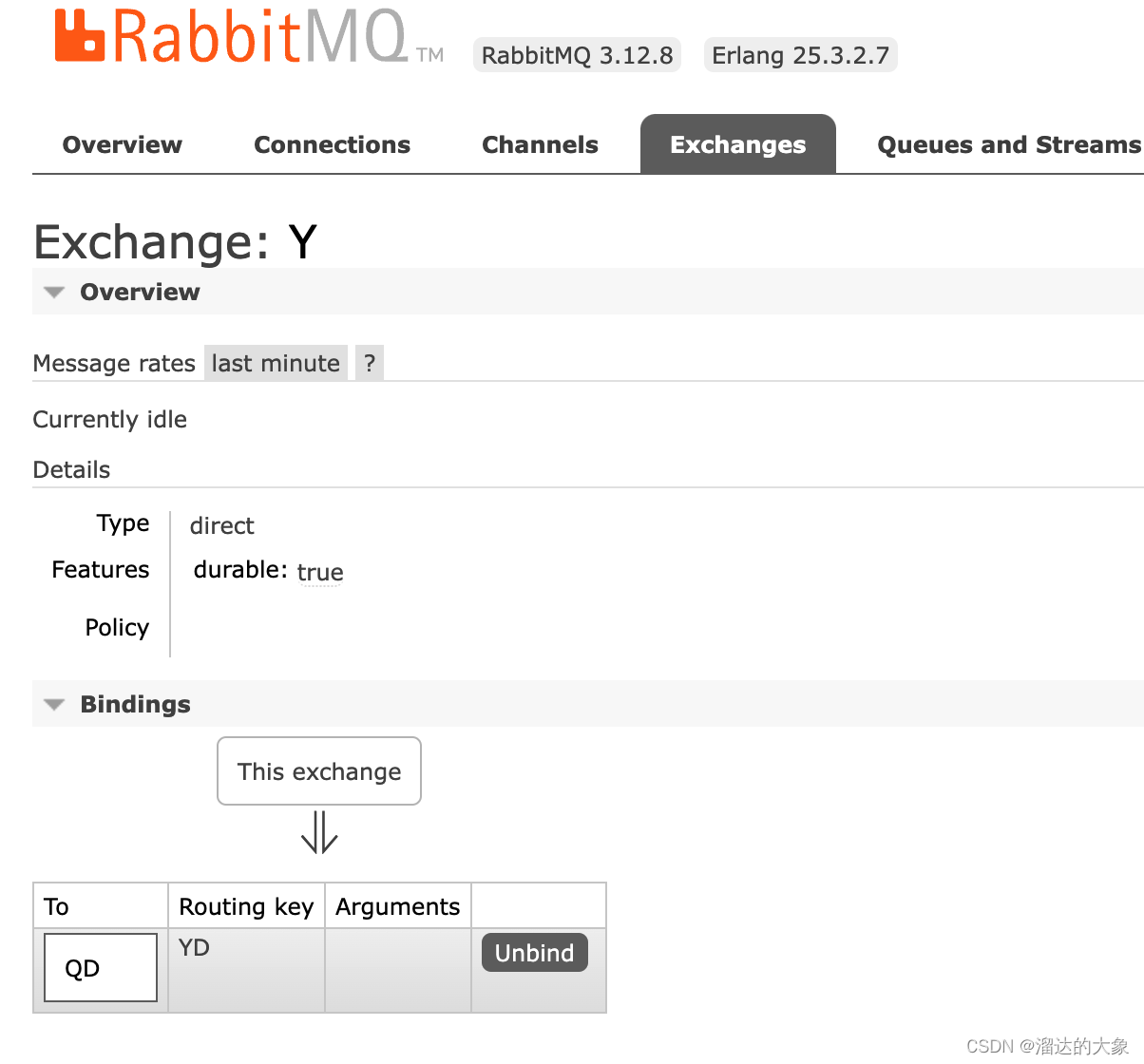
消息发布测试:
生产者发送消息:
浏览器:
http://127.0.0.1:19092/ttl/senMsg/nice
通过生产者发送:nice
当前时间:Tue Nov 21 14:50:05 CST 2023,发送一条消息给两个TTL队列:nice
消费者在10s后和40秒分别收到了消息:

拓展:是不是有一种可能,如果再队列中不设置过期时间,在生产者发送消息时设置过期时间 来实现过期时间自由设定,而延迟自由?
结论是不能:
rabbitMQ队列只会检查第一个消息是否过期。举例如果第一个消息的ttl为30s,第二个消息ttl为3s。第二个消息不会再3s后到达,而是会在第一个过期后,再第二个到达。
示例验证:
增加一个无过期时间约束的队列,以routing-key为XC绑定X交换机,过期后以routing-key为YD绑定Y交换机。
过期时间放生产者发送时设定。
在的rabbitMQ配置类中增加QC 绑定前(X routing-key=XC)后(Y routing-key=YD)交换机:
// 优化新增队列 队列不设置TTL过期时间 把过期时间放到生产者发送消息时public static final String QUEUE_C ="QC";//声明队列 QC 优化新增队列 队列不设置TTL过期时间 把过期时间放到生产者发送消息时@Bean("queueC")public Queue queueC(){Map<String,Object> arguments = new HashMap<>(2);//设置死信交换机arguments.put("x-dead-letter-exchange",Y_DEAD_LETTER_EXCHANGE);//设置routing-keyarguments.put("x-dead-letter-routing-key","YD");return QueueBuilder.durable(QUEUE_C).withArguments(arguments).build();}
//绑定队列QC与交换机X_EXCHANGE 优化新增队列 队列不设置TTL过期时间 把过期时间放到生产者发送消息时@Beanpublic Binding queueCBindXExchange(@Qualifier("queueC") Queue queueC,@Qualifier("xExchange")DirectExchange xExchange){return BindingBuilder.bind(queueC).to(xExchange).with("XC");}生产者:
@GetMapping("/sendttl/{message}/{ttlTime}")public void sendMes(@PathVariable String message,@PathVariable String ttlTime){
/*** 死信队列做延迟时的缺陷:* rabbitMQ只会检查第一个消息是否过期带来的问题就是,如果第一个消息的ttl为30s,第二个消息ttl为3s。第二个消息不会再3s后到达,而是会在第一个过期后,再第二个到达。*/log.info("当前时间:{},发送一条ttl为{}ms的消息给QC队列:{}",new Date().toString(),ttlTime,message);rabbitTemplate.convertAndSend("X","XC",message,mes->{mes.getMessageProperties().setExpiration(ttlTime);return mes;});}
消费者不变,启动服务!
生产者发送消息:第一条 3000ms
http://127.0.0.1:19092/ttl/sendttl/第一条30000ms消息/30000
http://127.0.0.1:19092/ttl/sendttl/第二条3000ms消息/3000

结论:第二条虽然早早过期,它依然需要等待第一条过期后,才能排到他。rabbitMQ的队列过期检查机制。

